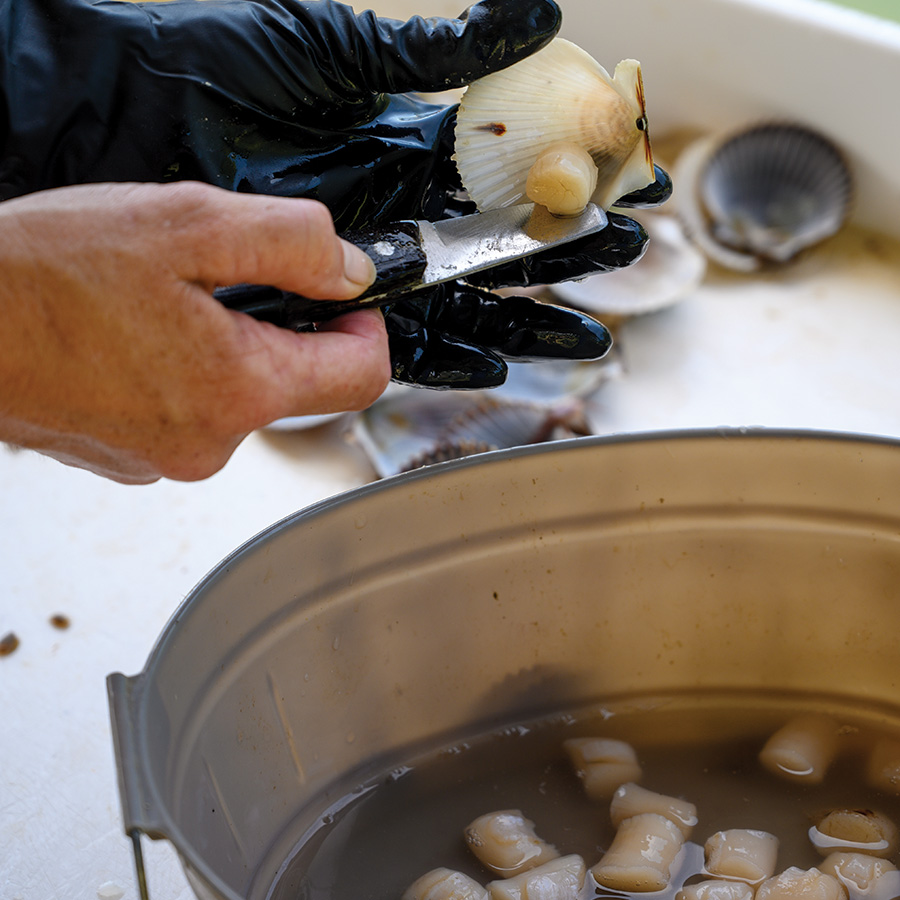If you never leave the beaches of Florida, you are missing an opportunity to step back in time to a more prehistoric side of our beautiful state. Massive ocean-going mammals swim in the shallow waters, and hard-shelled bi-valves, mostly unchanged for 200 million years, lie in the brackish sea waters just off the coasts, made possible by the magic of our freshwater rivers. For Floridians and visitors looking to reclaim some normalcy while sheltering and maintaining social distance, returning to the “wilds” has been a fantastic solution. Outdoor activities, like boating and snorkeling, lend themselves to maintaining safe distances, and if a manatee brushes against you in its natural habitat, worries about an ongoing pandemic will be the furthest thing from your mind. In times like these, Crystal River is perfectly situated to offer relief and escape to visitors.
At the mouth of Crystal River, a unique balance of freshwater from more than 50 springs flows west towards the Gulf of Mexico. There mixes fresh and salt, cool and warm waters, creating the unique environment of Crystal Bay, where unnumbered mollusks wait patiently for a lunch of plankton to move across the filters half-hidden in their cautiously opened shells. The Florida Bay Scallops watch with their one hundred blue eyes for hungry predators, ready to snap shut and jet away at a moment’s notice.
In 1969, scientists overseeing excavations at the Crystal River Power Plant discovered rhinoceros and mastodon bones and carapaces from giant armadillos and huge land tortoises. Unfortunately, these giants from the past are no longer around, but their near relative, the Florida manatee, has survived and swims now where land animals of the past once roamed.
The numerous springs feeding Crystal River keep it delightfully cool in the summer, and comparatively warm in the winter. At a constant 72 °F (22 °C) temperature year-round, it serves as a winter refuge for as many as four hundred manatees and a summer home for a dozen or more. It’s also the only place in the United States where people can legally interact with manatees in their natural conditions. This is what brought my family this summer to the manatee mecca: Plantation on Crystal River.
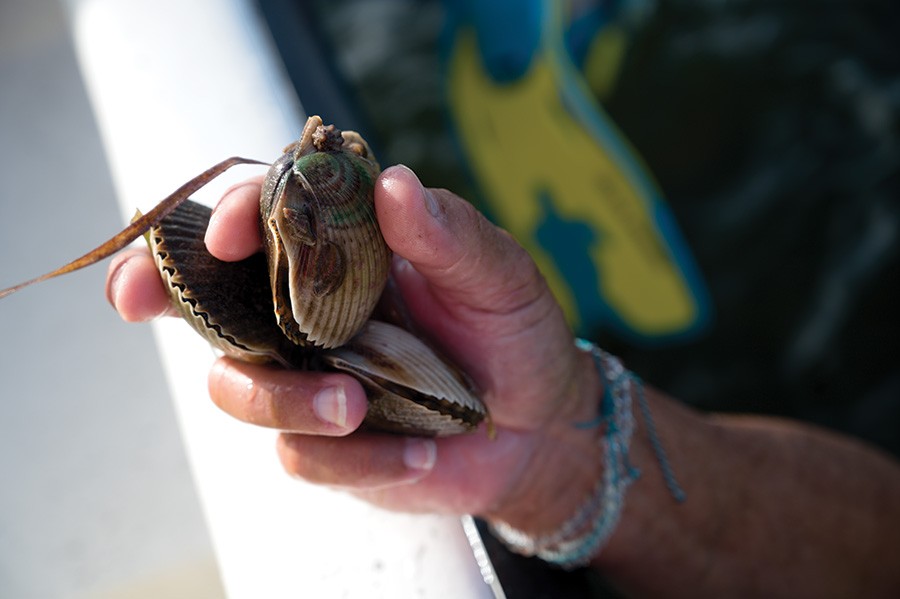
Our days at the Plantation on Crystal River were spent mostly in the water. And it’s hard to imagine a more convenient and relaxing place to base oneself. The resort offers an on-premise dive and boating center. Each of our adventures started the same way, we woke, put on swimsuits, and walked out the individual backdoor to our room. A brief walk across green grassy yards, running along a quiet canal, brought us to the Plantation Adventure Center Dive Shop where we could collect masks, snorkels and fins for scalloping, or masks, snorkels and wetsuits for manatee observation.
And on return, it was just as easy to walk back to our rooms to shower, clean and rest a bit. It’s hard to put into words just how pleasant it is to walk “home” and not be loading one’s wet and exhausted family into the SUV for an uncomfortable drive. Our adventure was focussed on being in the water with various critters, but just about every other guest at Plantation had brought fishing rods with them. When they were not off on boats, with and without guides, our fellow travelers were fishing from the lawn into the canals.
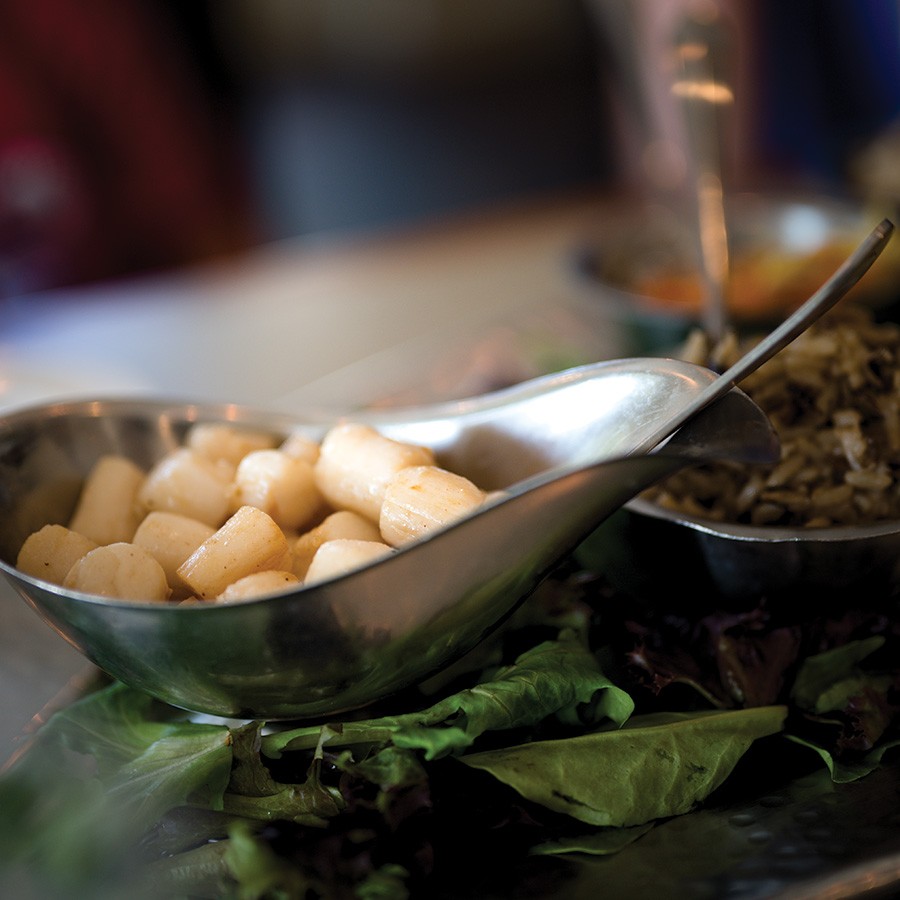
For the Crystal River manatees, summer turns the river and bay bottoms into endless “all-you-can-eat” salad bars. We swam along beside a beautiful momma and calf as they crunched their way through the tall seagrass. The big herbivore’s grinding teeth cut clear paths in the grass, and, sometimes, you would hear, underwater, the animals’ loud chewing before you could see them. Manatees are entirely harmless to people, but I did manage to have one startle me.
With a mask and snorkel, peripheral vision drops to almost nothing. I swam with our small guided group over to see what they were looking at. I peered in the green water ahead, trying to make out what was so interesting. I sensed that the fellow swimmer beside me was drifting a little close, so I paddled lightly to shift away, barely moving my hands. In the springs, you swim carefully and without flippers so as not to stir up the river bottom.
The not-practicing underwater-social-distancing swimmer kept coming closer, so I looked to see who had such poor swimmer’s manners. I then realized I was a couple of inches from the grey, rough-skin of a 1000-lb female sea cow. It was startling, to say the least. I guess she also had wondered what we were all looking at, had outflanked us and joined our circle. Our guide Courtney, noticed the curious giant and held me still in the water while the manatee snuffled at my face and mask with her soft snoot and her head the size of an over-large pumpkin. The big cow decided I was less interesting than the seagrass, and she dropped back down and returned to her mowing. The photo the guide took of me receiving “manatee kisses” will forever remain with me as a highlight of the trip.
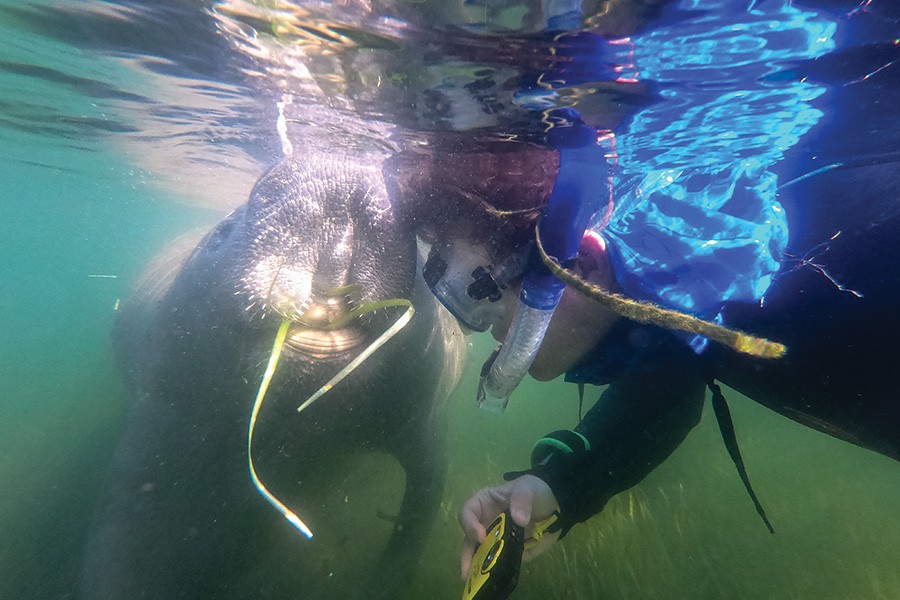
Scallop hunting was an altogether different experience. We climbed aboard Captain Ed Menster’s fishing boat and zoomed out into the broader expanse of Crystal Bay. The captain anchored the boat. The shore was quite distant, but the bottom was never more than five feet below. With masks, snorkels and swimfins, we all slipped overboard and began scouring the bottom for scallops.
Again, it was essential to keep your feet up high, so as not to stir up the silty floor, but it was good to know that if you needed a moment to recompose your mask, or just take a break, it’s always an option to just stand-up in the calm waters. The scallops were both comically frenetic and strangely alien at the same time. Those one hundred eyes shine and shimmer underwater, and when you reach for a scallop, you need to be quick and hold on tightly as their snapping, flapping swimming motion can quickly take them out of reach if you aren’t committed to the capture. Bring them to the surface, and they squirt and wiggle vigorously, resulting in peals of laughter from the kids. Our captain let us know that a recent storm had stirred up the Bay, and as such, our quest was more challenging than usual. For the stronger swimmers in our family, that was fine; we just had to cover extra ground on the hunt. The kids ended up spending more time frolicking by the boat than searching for the evening meal. When asked to rate the day on a one to five scale, my 10-year-old son answered, “one million,” so that’s a big success. Despite the effect of the storm, the playful semi-participation of the kids, and the shy mollusks, we (with the help of the captain) still nabbed a good 50-60 scallops, plenty for a hearty meal.

This is a place where the cleanliness and health of the environment are vitally important. Like many bodies of fresh and brackish water in Florida, the Crystal River waterways are under attack by the invasive blue-green algae, lyngbya. This mat-like growth blocks light, crowds out other plants and renders the waters murky. A home-grown initiative, the Save Crystal River project, has innovated new ways of clearing the waterways and works at planting healthy eel grass. The grass variant in use was cultivated at the University of Florida’s Institute of Food and Agricultural Sciences. All of the plants are grown by Sea and Shoreline, the largest seagrass nursery in the world and the only inland certified aquatic nursery in Florida. It has specific strengths such as salt tolerance and hardiness that enable it to stave off the algae’s return.
The first pilot project, Hunters Cove Restoration Project, begun in 2015, has flourished. About four acres of canals near Hunter Springs, a part of the Crystal River spring system, have seen 6,714 hand-planted seedlings flourish into an eel grass meadow estimated to include five million plants. If you are exceptionally fortunate, the Manatees will be playing and eating in the part of the system during your visit. The water is clear and lovely, much as it was when the name was given to the river. The program seems to be a success, and the cleaning process should move through the rest of the King’s Bay water system at an increasing pace in the coming years.
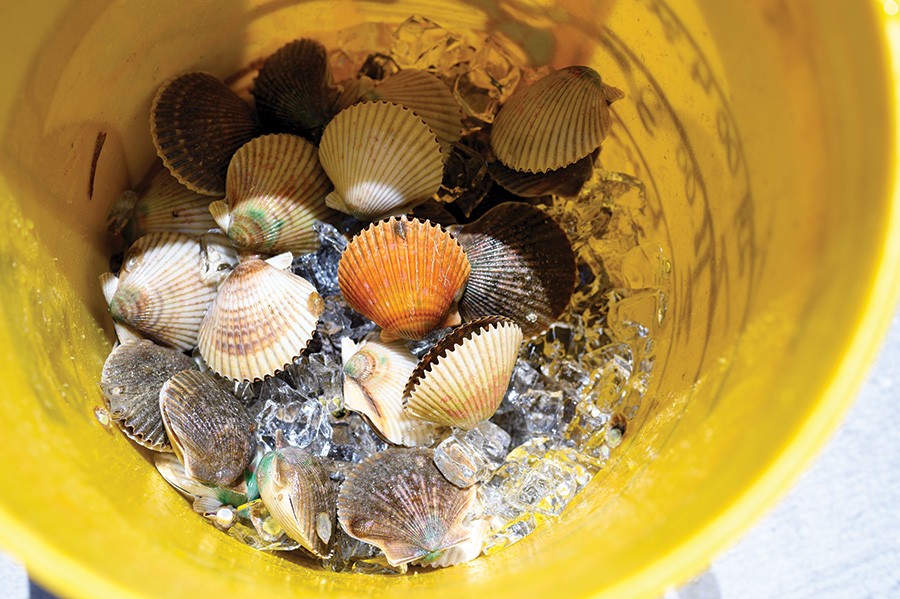
Our time on the Bay left us happy and tired, so it was wonderful to hand off the bucket of shellfish and ice cubes to the expert shuckers set up under a tent beside the Adventure Center. For $6 a pound, the husband and wife shucking team turned barnacled shells into delightful scallop medallions with dizzying speed. Finishing our trip, and our hunting expedition, with dinner at the on-premises restaurant West 82, was perfect. The scallops we (and our captain) had found were already in the restaurant kitchen. We were given a range of options on how they might be prepared, and we decided on two sauces: one with lemona dn garlic and the other with cream mushroom. Both were delicious, and the kids were especially proud to have contributed to the haul. My daughter put in a special request for spaghetti with red tomato sauce, which the kitchen accommodated fully. They even reduced fresh tomatoes, making the sauce from scratch. It was fantastic and should be on the menu! West 82 can name it after my daughter if they like, she surely wouldn’t mind. For the grown-ups, there was an excellent selection of mixed drinks. I heartily recommend the Crystal River Cruise, with Bulleit Bourbon, sweet and sour mix, pineapple juice, fresh orange and a sprig of mint.
The Plantation had so much else to offer, from a vast pool and a soon-to-be-finished water area for kids to shuffleboard, horseshoes, beach volleyball, and cornhole. If we had had more time, we would have done it all, but for my family, this trip was spent perfectly—in the water, exploring the springs, meeting the world’s cutest baby manatee and gathering prehistoric bi-valves for dinner. We felt very much at home in the nature and naturalness of Florida. SRQ
Plantation on Crystal River. 9301 W Fort Island Trail, Crystal River, Florida 34429. Reservations 800.632.6262. Information: 352.795.4211 . Adventure Center and Marina, 352-795-5797.




